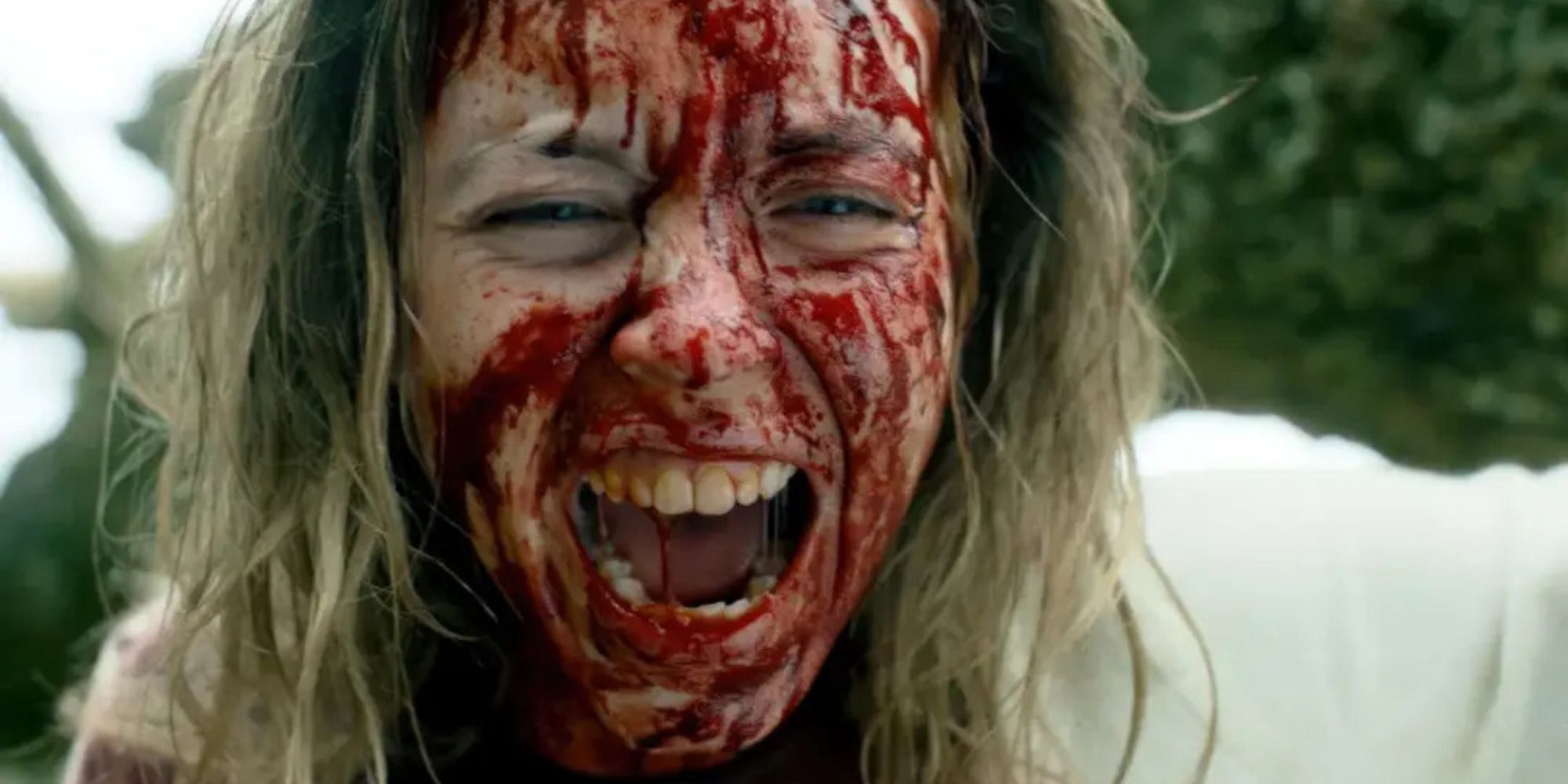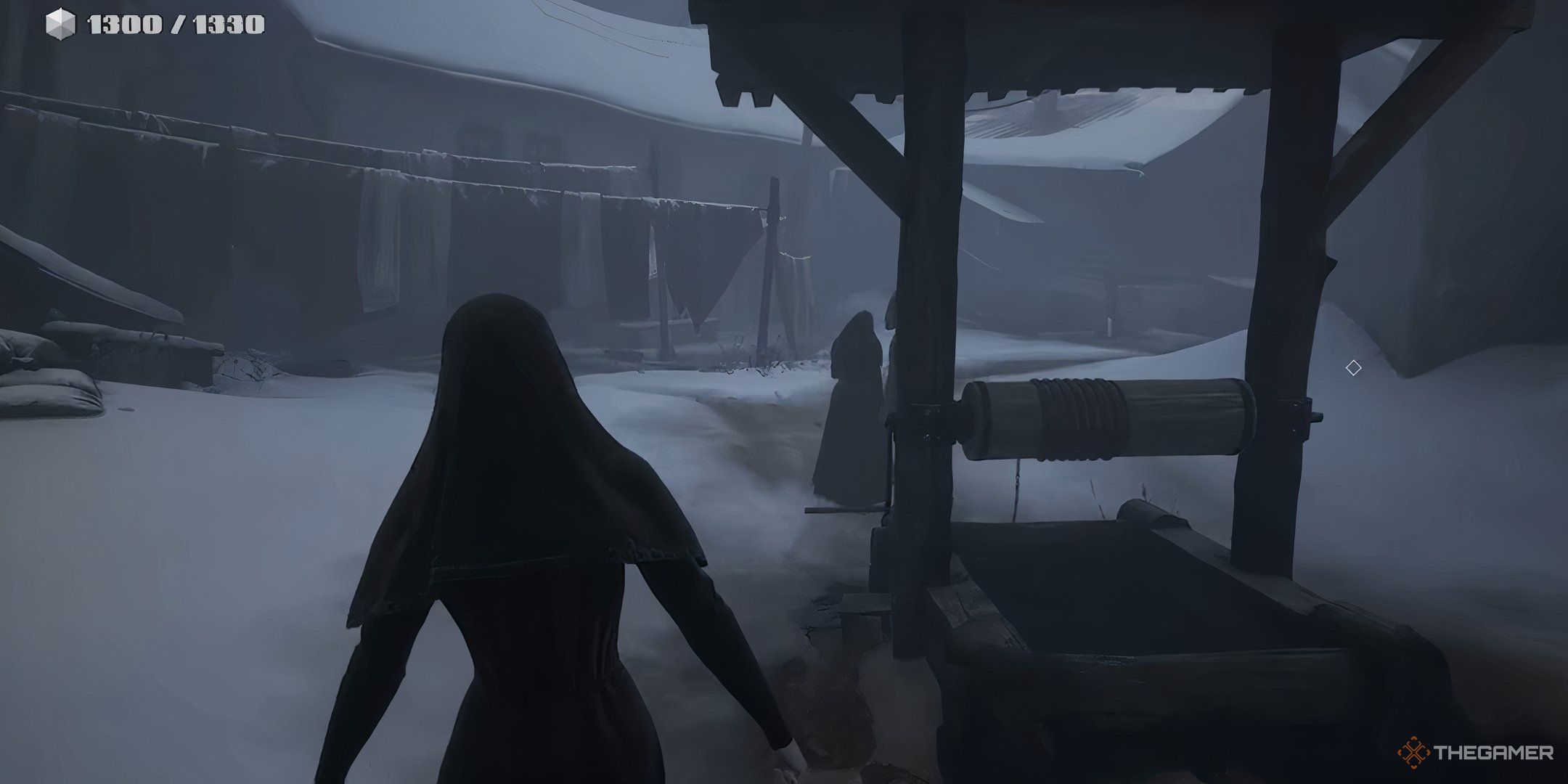Indika stunned me very early into the sport. After the preliminary 20 minutes, which arrange the younger nun’s tedious life in a Russian Orthodox monastery, the troubled heroine emerges into the skin world, tasked by her superiors with delivering a letter. Not lengthy after that exit from isolation, you see some issues that provide you with your first indication of the time interval wherein the sport takes place. There are phone poles, you run into a personality with a pistol, and Indika rides on a motorized bike. Add in an honest quantity of F-bombs, and it turns into clear that you simply’re not within the 1700s.
Indika Makes You Ask: What 12 months Is This?
Speaking time interval is uniquely troublesome for nun tales. All the things in a monastery tends to seem like it may have existed at any time previously two millennia. The robes, the candles, the partitions, the stained glass home windows in dimly lit sanctuaries. I’ve by no means been inside a Christian monastery — although I briefly visited with some Buddhist monks for a day in Cambodia — so my conception has been knowledgeable solely by media like Pentiment, Benedetta, and The First Omen, all of which present monastic life by the centuries.
This stylistic stagnation can current sure challenges for artists making an attempt to inform tales on this milieu. I spoke to filmmaker Michael Mohan, who directed the Sydney Sweeney nun horror film Immaculate, earlier this yr. He instructed me that the filmmakers had pointedly added a scene of Sweeney’s character arriving in Italy at an airport to get forward of those questions concerning the time interval. There is a scene close to the climax of the movie wherein a cellphone performs a significant position, in order that they wanted to ascertain that, sure, this film is in actual fact happening through the fashionable period.
Monasteries Are Timeless By Design
This timelessness is by design. The monastic life is designed to release monks and nuns from the considerations of the world, permitting them to concentrate on deepening their connection to God by the cloistered life. Most monasteries follow a commerce, and typically that commerce requires fashionable know-how. However usually, the area is designed to be as free from distraction as doable.
Add in that each the Catholic and Orthodox church buildings consider that their fashionable custom is instantly related to the time of Christ by apostolic succession, and the timelessness takes on one other that means. It is a corrective to fashionable Protestantism which largely embraced fashionable tech in worship companies as a approach of casting a wider internet, and bringing in youthful individuals. Many Protestant church buildings in 2024 mission track lyrics on screens on the entrance of the sanctuary, and infrequently do the identical for no matter scripture is learn. They not often sing music greater than 20 years previous, and incorporate fashionable devices like electrical guitars, drumkits, and keyboards. Protestant church buildings mirror the passage of time, and Orthodox and Catholic church buildings are inclined to lean within the different path, making an attempt to construct areas that really feel out of step with the mundane busyness of life.
The abnormal world Indika inhabits, which we see within the recreation’s mundane opening hour, is designed to really feel distant from the world she ventures out into as the sport progresses. The monastery is ‘on this planet, however not of the world’. So, once you play a recreation like Indika and see that it feels prefer it’s set in 1700 regardless of the phone strains putting it within the more moderen previous, that is not an oversight. It is a sensible little bit of characterization concerning the non secular custom that Indika belongs to.

Subsequent
Sydney Sweeney Interview: THAT Scene In Immaculate Was The First Take
Immaculate ends on a excessive word and Sydney Sweeney and director Michael Mohan say it solely took one take to get it proper.







